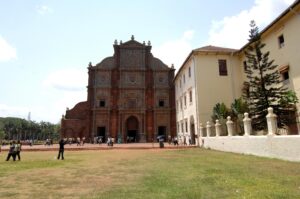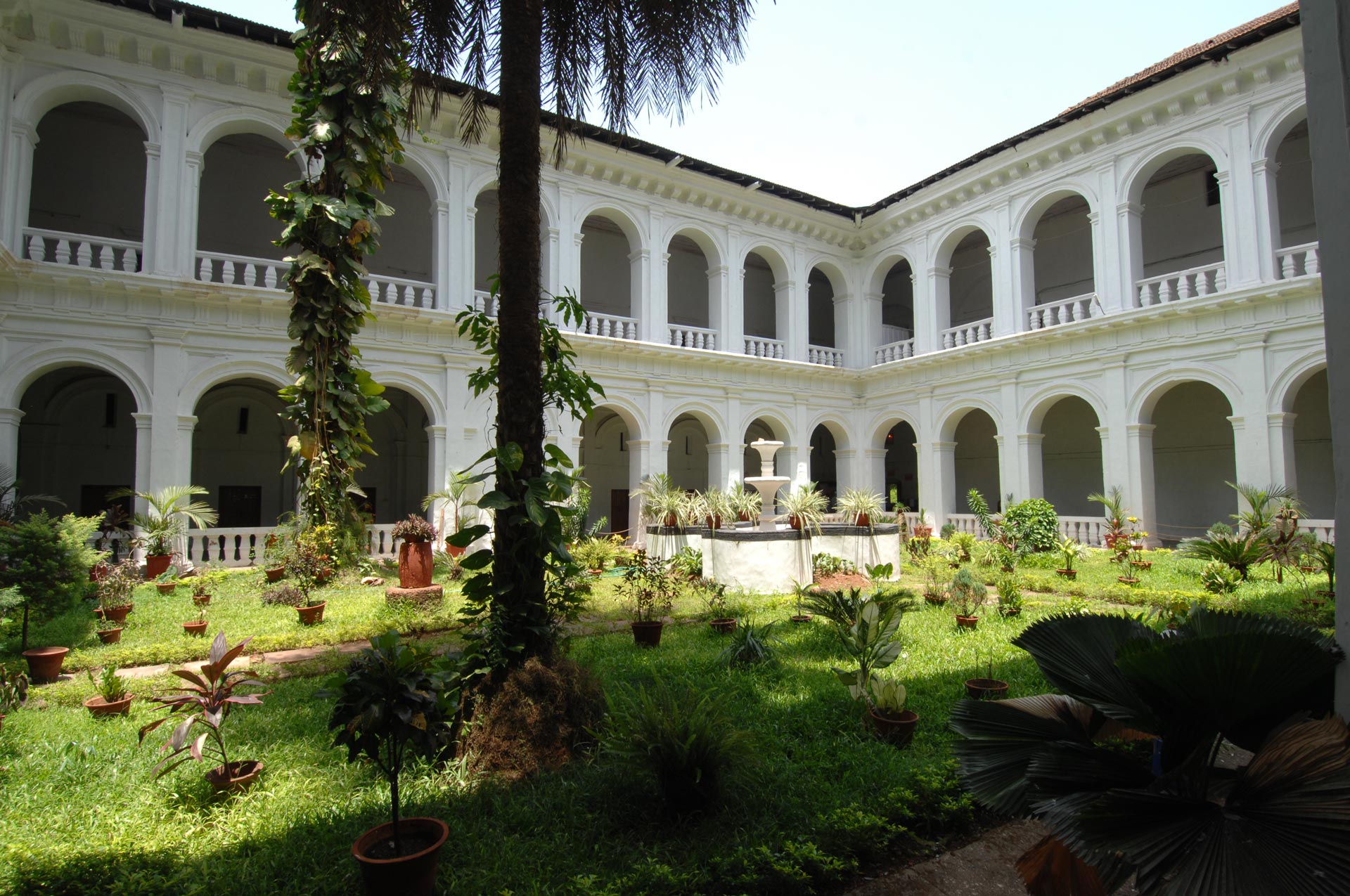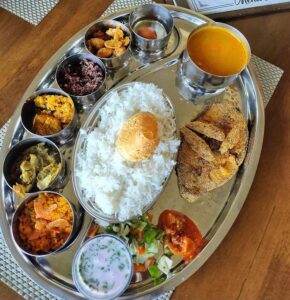‘He who has seen Goa need not see Lisbon’
Goa celebrated its 59th liberation day last week, but the impact of nearly 450 years of Portuguese rule in the state can still be seen in practically every aspect of the Goan life. Even to an outsider, the state may seem less Indian than the rest of the subcontinent and more Portuguese. From food to architecture and language, the Portuguese influence lingers on.
Architectural marvels
One of the first signs of Portuguese influence in Goa can be seen in its architecture, with hundreds of churches and mansions that the Portuguese had built, following their own traditions and which till today bear witness to the strong connection that Goa and its people enjoy with their former colonial rulers.
When flying to Goa, brightly-painted buildings, standing in sharp contrast with the verdure, become visible as soon as the airplane begins to descend. On a closer look, one can see that the houses with distinct doors and windows extend into porches and large balconies. Although simple and seemingly effortless, the houses look elegant with stucco mouldings in window frames and gradually sloping roofs coated with bright colours.
Fontainhas, near capital Panaji, is home to the oldest Latin quarter in Goa. From the palatial mansions to the small houses; every slice of architecture is reflective of 18th century Portuguese Goa. Their pristine style is a brilliant amalgam of the Indian and European architectures. The lanes are kept clean and decorated with flowerpots kept alongside the bright coloured exterior walls. The colonial oppressors were stern about the cleanliness in the city. Painting the walls after every Monsoon was mandatory and people were fined or imprisoned for not following the rules.
While the Goans and the outsiders have maintained the external appearance of these mansions and other humble dwellings, families have renovated the interiors by the modern standards. “The washrooms were horrendous. New rooms for the kitchen and washroom had to be constructed,” says Anjali Kaul-Phadte, a Kashmiri who has been living in Goa for 10 years now. “The Hindu families also place tulsi (basil) plants in their homes while the Catholics hang the Cross on their walls,” she adds.
The Indo-Portuguese mansions are a treasure trove of historical relics. Braganza House at Chandor, in south Goa, is the grandest and the most astonishing mansion containing Chinese antiques and Belgian chandeliers. The ballroom still adorns the coat of arms (given by the Government of Portugal) on its walls.
The Figueiredo House in Loutolim represents the old Portuguese aesthetics with tiled roofs converging down to a grand entrance and wrapped with green courtyards and palm groves. Built in 1590, the house is older than the Taj Mahal but yet has porcelain plates hanging on the walls and Belgian chandeliers and Italian tiles adorning the entire mansion.
Located around 10 km east of the state capital Panaji, Old Goa is a UNESCO world heritage site today. The place exhibits churches of the Portuguese era like the Se Cathedral, the Basilica of Bom Jesus and the St Augustine Tower. The tower is a remnant of the St Augustine Church Complex and the lone survivor among the four towers.

Basilica of Bom Jesus: A Roman Catholic Basilica in old Goa that houses the mortal remains of St Francis Xavier (MIG photos)
The famous architectures have also been restored or the ruins are being looked after to prevent further decay. “Not every building is fun after it is restored. Children like climbing up those rocks. St Augustine Tower looks wonderful the way it is,” says Kaul-Phadte.
But the Portuguese connection can be found in other aspects of Goan life as well. Recently, former chief minister and Goa Forward Party chief, Vijai Sardesai, promised to make afternoon nap or siesta compulsory between 2 pm and 4 pm. As an integral part of the Goan philosophy of susegad, post-lunch afternoon naps are a way of life in the state, he said. Susegad is a derivative of the Portuguese word sossegado, which means quiet. This is typically associated with the state by the tourists who visit its beaches to enjoy the sun-sand-sea paradise.
The older generation reminisces of the pre-liberation era. “My grandparents were staunch believers that things were better in administrative terms during the Portuguese rule. They hated the Indian way. And as a kid, I was a blind patriot and would always support the Indian side. But growing up, when you look at the state of affairs and you hear the elderly reminiscing about the good, old days, you actually begin to wonder,” says Joshua George, a student in Panaji.
Joshua goes on to say that his grandparents used to say that during the Portuguese rule, the city administration would ensure cleaning of drains and sewage before the monsoons set in, to prevent flooding during rains. “Today, the incessant rains water-log the low-lying areas and the residents are forced to evict their homes every Monsoon,” says George.
Not everyone agrees, though. “It is the romanticised notion of colonialism, especially by the Catholics. This pre-liberation reminiscence largely arises from their religious similitude to the colonial rulers, who were undemocratic and sticklers for the rules,” says Kaul-Phadte.
The Portuguese left an indelible mark on the Goan life, tradition, food, architecture and the legacy continues. The generation that lived pre-liberation is fading in time. The Portuguese-speaking population is on a steady decline, although Konkani is being actively encouraged in schools and government offices. Goeankarponn is the Goan identity which is manifested through their mother-tongue, Konkani.
Although the Goans deny any discrete Portuguese influence in their lifestyle and culture today, it has become much like the rest of the country: a blend of Indian and Western culture, with a Portuguese tint across every cultural and social aspect.
Cuisine
One of the most prominent influences can be felt on the tip of the tongue. Goan cuisine is heavily influenced by a blend of Portuguese and local Konkani elements. Portuguese introduced potatoes, cabbage, spinach, eggplant and many other vegetables in India in the early 17th century. Chilies were outlandish in the Indian cuisine until they were introduced by the Portuguese from the American continent.
Besides the vegetables, the Portuguese also introduced several dishes in India which were then cooked in Indian culinary ways. “Shark Ambot Tik is a rich example of Portuguese influenced Goan food with punches of sour and spicy. Pork Vindaloo, Feijoada and Xacuti are other famous examples that are served across Goa and are the Indian rendition of Portuguese food,” says Adelle Fernandes, a university student in Goa.
Traditional attire
In his book Moda Goa: History and Style, late Indian fashion designer Wendell Rodricks wrote that Portuguese introduced several Indo-western costumes in India. Rodricks also talked of “Stockholm Syndrome of the Goans for their captors” as the natives quickly adapted to the change. “Women were barred from wearing sarees in the outdoors as they revealed too much. People were forced to wear boots and waistcoats,” he wrote in his book.
Today, the tropical climate influences the Goan garments as cotton clothes are worn across the coast. Goan catholic women wear gowns and dresses on an everyday basis while the Hindu women wear Nav-vari saree. Modern Goan Catholics hold a White wedding where the bride wears the virgin-white gown.











